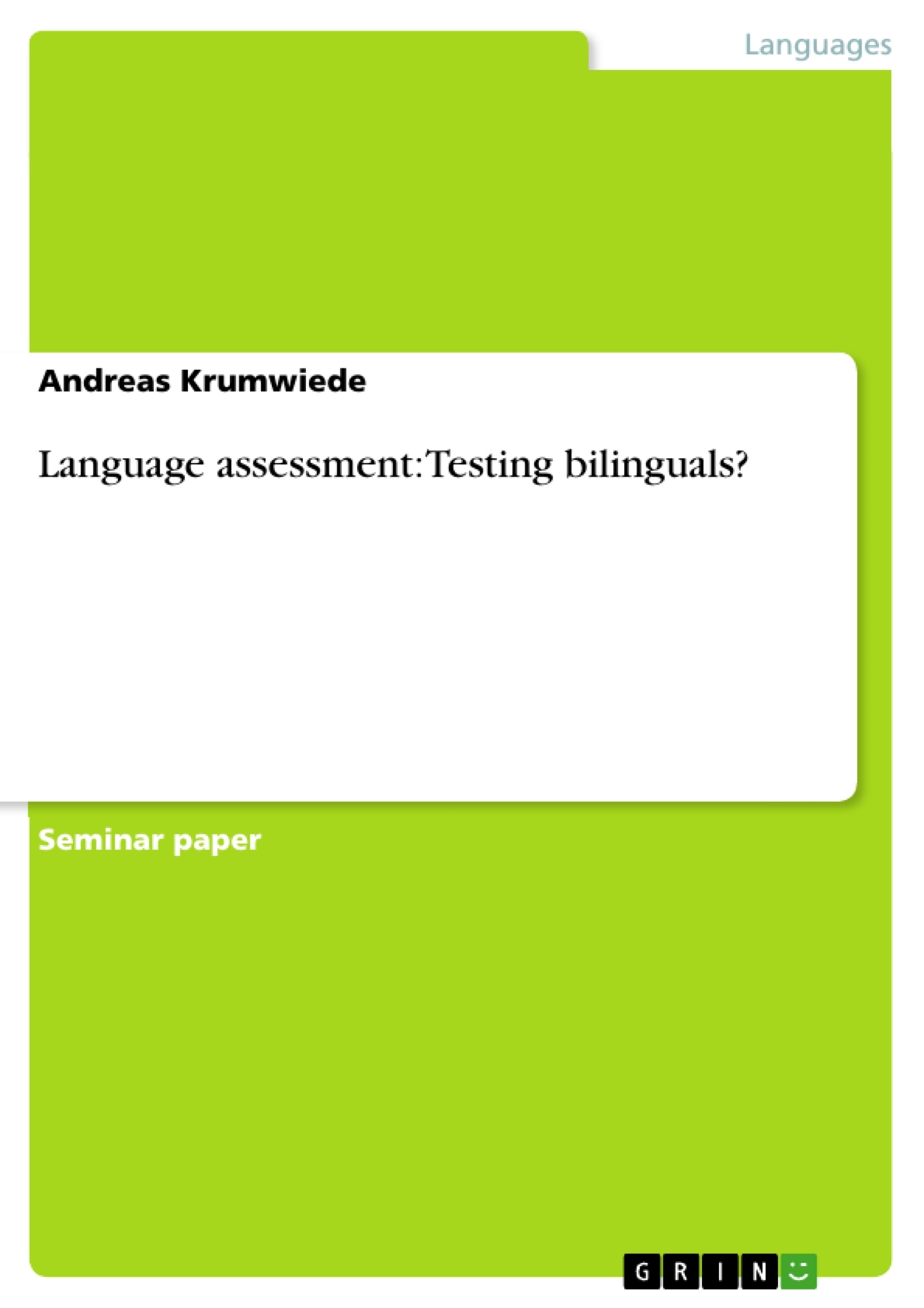In the last decades, the number of bilingual children in German schools, most of them elective bilinguals, has continually increased. Numerous migrants and immigrants of all nationalities and of e.g. Russian and Turkish origin have raised their children in Germany while many of them never really learned to speak German as a second language (L2) additionally to their first language (L1). It is these kids of the second (or third) generation who are born as German citizens, receive German schooling and grow up bilingual. At home, often the native tongue of the parents is spoken. Due to being enclosed in a cultural community within their German community, they never learned to speak, read or write German properly. So the popular language at home remains the parents’ L1. The children are usually and according to law raised and educated in German institutions (kindergarten, school). They pick up German as a second language, if for example Turkish or Russian is mainly spoken at home. Or they even learn German as L1, when one or both parents have a sufficient command of the German language. “Bilingualism in migrant communities differs from the more stable and (to some extent) institutionally legitimized types of bilingualism […] Characteristically, it spans three generations, the oldest speaker sometimes being monolingual in the community language, the economically active generation being to varying degrees bilingual but with greatly differing levels of competence in the host language, while children born in the host community may sometimes be virtually monolingual in the host language” (Milroy and Muysken 1995, p. 2). These are two examples of possible bilingualism as they can be found with the children of migrant and immigrant families. So the reality in most of Berlin schools is that, depending on the district, a high to very high percentage of the pupils in school are ”Schüler-nicht-deutscher-Herkunftssprache”1. Recently a test has been designed to evaluate the skills of children who enter elementary school. This test, “Bärenstark”, will be critically discussed later in this paper. As a matter of fact, the importance of testing verbal skills seems to grow in Germany.
Inhaltsverzeichnis (Table of Contents)
- Introduction: Importance of the issue.
- Definitions
- Circumstantial versus elected bilingualism.
- The concept of the native speaker: the general standard against which bilinguals are compared
- Domains in bilingualism..
- Diglossia.
- Semilingualism
- What does it mean to know a language?
- Language proficiency vs. verbal ability as criteria in assessment of bilinguals..
- Methods of testing
- An overview of tendencies how bilingualism has been measured
- Historical stages of testing.
- Self-report data
- Self-rating of language abilities.
- Sociolinguistic background questionnaires.
- Measuring language “dominance” in bilinguals.
- Summary.
Zielsetzung und Themenschwerpunkte (Objectives and Key Themes)
This paper explores the challenges and complexities of assessing the language abilities of bilingual individuals, particularly in the context of German schools where a growing number of students are bilingual. The paper discusses various definitions of bilingualism, including circumstantial and elected bilingualism, and examines the concept of the native speaker as a standard against which bilinguals are often compared. The paper also delves into different methods of testing bilingualism, including self-report data and measures of language dominance.
- The challenges of measuring bilingualism and the need for nuanced approaches.
- The concept of the native speaker and its limitations in assessing bilingual competence.
- Different types of bilingualism, including circumstantial and elected bilingualism.
- The impact of cultural and social factors on bilingual language acquisition and use.
- The importance of understanding the complexities of language proficiency and verbal ability in assessing bilinguals.
Zusammenfassung der Kapitel (Chapter Summaries)
The introduction outlines the increasing prevalence of bilingual children in German schools and highlights the significance of understanding their language abilities. It emphasizes the growing importance of testing verbal skills, especially in the context of the "Bärenstark" test for elementary school students.
The second chapter delves into different definitions of bilingualism, distinguishing between circumstantial and elected bilingualism. The chapter also explores the concept of the native speaker as a benchmark for bilingual proficiency, discussing its limitations in evaluating bilinguals who may exhibit contact varieties of their languages.
Schlüsselwörter (Keywords)
Bilingualism, language assessment, native speaker, circumstantial bilingualism, elected bilingualism, language dominance, contact variety, language proficiency, verbal ability, sociolinguistic background, self-report data, German schools, "Bärenstark" test.
- Citation du texte
- Andreas Krumwiede (Auteur), 2003, Language assessment: Testing bilinguals?, Munich, GRIN Verlag, https://www.grin.com/document/45889



